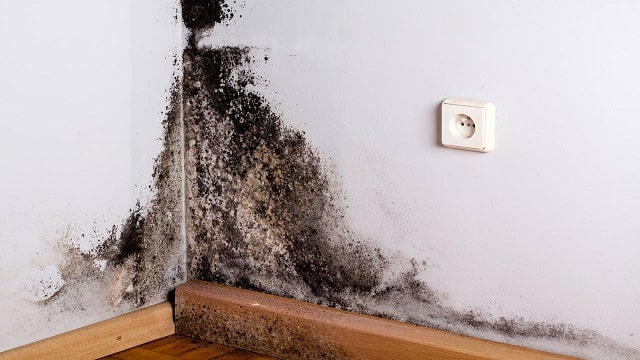What Is Black Mold?
Black mold, also known as Stachybotrys chartarum, is a type of fungus that can grow in indoor environments.
This mold usually grows in damp, dark places, such as behind wet walls or in areas where water leaks occur. Despite its name, “black mold,” it can actually be dark green to black in color.
Black mold is a type of fungus that can produce toxins that are potentially harmful to human health. These toxins are called mycotoxins, which can be inhaled or enter the human body through skin contact or consumption of contaminated food.
Black Mold Symptoms
Symptoms that can arise from exposure to this fungus vary, depending on the level of exposure and individual sensitivity.
Some symptoms that may appear include:
- Irritation of the respiratory tract: Cough, runny nose, sore throat, or shortness of breath.
- Skin irritation: Rash, itching, or other skin irritation.
- Eye irritation: Red, itchy, or watery eyes.
- Other symptoms: Headache, fatigue, or sleep disturbances.
Causes of Black Mold
Black mold grows and reproduces in damp and dark environments. This fungus is formed from high humidity in the room. For example, water leaking from the roof or lack of ventilation.
This fungus can also grow on building materials made from organic materials, such as wood or paper, that are exposed to water for prolonged periods.
Black Mold Risk Factors
Several factors can increase a person’s risk of developing this indoor fungal infection, including:
- A damp and dark environment supports the growth of black mold.
- People with weak immune systems are susceptible to infections.
- People with respiratory diseases, such as asthma or allergies.
- Long-term exposure to black mold can increase the risk of developing negative effects.
Black Mold Diagnosis
Diagnosing the effects of black mold is often not easy. Because the symptoms are often similar to those of other diseases or allergies.
However, there are several steps that can be taken to diagnose possible exposure to black mold:
- Medical history
The doctor will collect information about the symptoms experienced, how long the symptoms have been felt, and the living or working environment that may be contaminated with black mold.
- Physical examination
A doctor may perform a physical exam to look for signs of black mold exposure, such as respiratory symptoms or skin irritation.
- Skin test
Doctors can perform a skin test to check whether a person has an allergic reaction to black mold spores. However, this test is not always accurate and should not be used as the sole method of diagnosis.
- Blood test
Blood tests can be done to check for specific antibodies to the toxin from black mold.
However, this test also has limitations in accuracy and cannot be the sole method of diagnosis.
- Environmental testing
If necessary, air or surface samples can be taken from suspected contaminated areas to identify the type of mold growing, including black mold.
- Imaging tests
Imaging tests such as X-rays or CT scans may be necessary if there is suspicion of infection or irritation of internal organs due to black mold exposure.
Black Mold Treatment
Treatment for black mold exposure typically includes:
- The first step to take is to eliminate the source of black mold growth indoors, such as repairing water leaks or increasing air ventilation.
- Using a special mask can help reduce exposure to black mold spores.
- Cleaning areas contaminated with black mold using appropriate cleaning materials can help reduce the risk of exposure.
- To treat the symptoms that appear, doctors can prescribe medications such as antihistamines or decongestants.
Black Mold Complications
Long-term exposure to black mold can cause several health complications, such as:
- Respiratory tract infections, asthma, or chronic obstructive pulmonary disease (COPD).
- Continued exposure may increase the risk of depression or anxiety.
- Chronic skin infection or irritation.
Black Mold Prevention
Preventive steps that can be taken to prevent the growth of black mold indoors include:
- Make sure the humidity in the room is controlled by using a dehumidifier or good ventilation.
- Immediately repair water leaks in the house to prevent mold growth.
- Clean and dry areas that are susceptible to moisture regularly.
- When cleaning contaminated areas, wear a mask and gloves to reduce the risk of exposure.
By understanding the causes, symptoms, and proper preventive measures, you can avoid the negative effects of this fungus.

